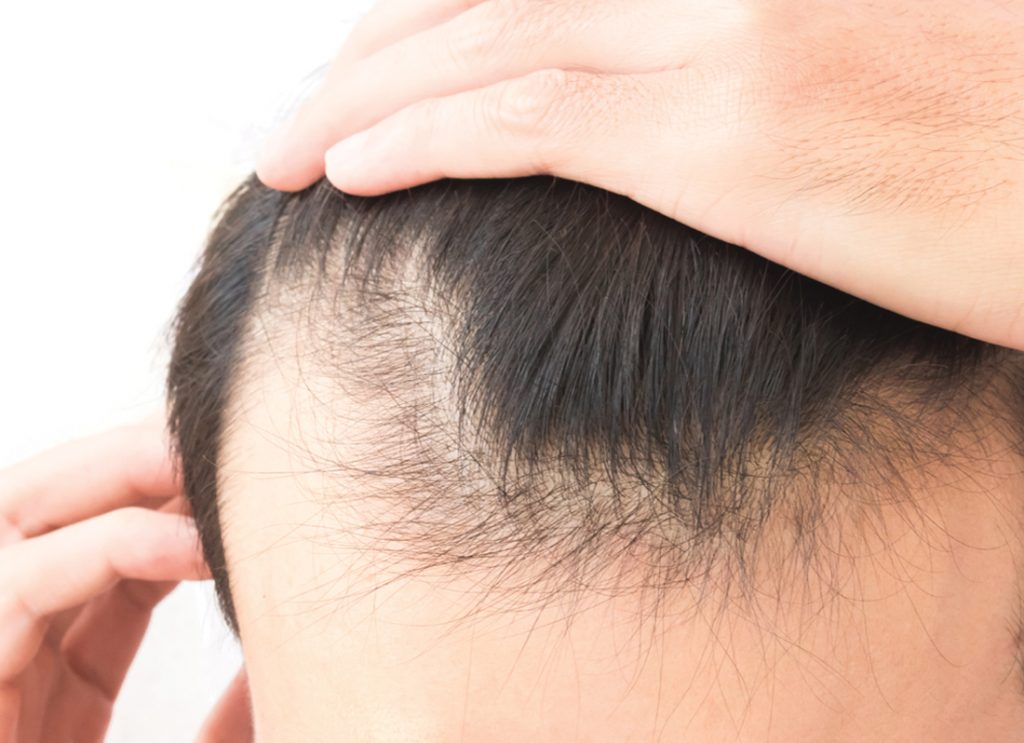
Hair loss — medically known as alopecia — is a common problem in men, women and, less frequently, in children. As people age, their rate of hair growth slows. This is known as involutional alopecia and is a natural condition when hair follicles enter a resting phase while the remaining hairs become shorter and fewer in number.
Hair loss may also be caused by a range of underlying conditions. These include autoimmune disorders, hormonal disorders, dietary deficiency, and diseases of the scalp. Hair loss can also be due to a condition called trichotillomania, which refers to self-inflicted hair pulling.
Bald issues
The most common cause of hair loss is androgenetic alopecia, or male or female pattern hair loss. This genetic condition is more common in men, but can also affect women. It results in the distinct M-shape of male pattern hair loss and can strike as early as one’s teen years. In women, it is known as female pattern hair loss and occurs typically from the age of 40. Women experience thinning over the crown, front and sides with finer hair; unlike men, they do not develop a bald pate.
Alopecia areata results when the immune system attacks hair follicles, causing patchy hair loss in children and young adults. The condition can occur suddenly, may affect eyebrows, eyelashes and hair elsewhere on the body, and may sometimes progress quite quickly to near-baldness. While single small patches of alopecia areata may resolve spontaneously, more extensive or worsening alopecia should be seen quickly by a dermatologist for diagnosis and treatment. In most instances, the process may be halted and the hair regrows within months to two years.
Scarring alopecia is the permanent loss of hair due to inflammatory skin conditions such as acne, skin infections (cellulitis, folliculitis) and other skin disorders (such as some forms of lupus). Hairstyles that exert pressure on the hair roots (such as tight braids or ponytails) can also result in permanent hair loss.
Nutritional deficiencies (such as iron deficiency), thyroid disorders, stress to the body (such as severe illness, after childbirth and surgery) and some medications can lead to general thinning of the hair. Damage to the hair shaft, such as fungal infection of the scalp and excessive heat or chemical treatment to hair, causes hair to break easily. This results in apparent hair loss.
Hair loss prevention
Not all causes of hair loss are preventable. Genes and hormones play a big role in determining hair growth. However, some risk factors are avoidable. For instance, one should stay away from excessive chemical treatments (colouring, perming, straightening) as the constant application of heat and chemicals on the scalp and hair may weaken hair or damage the scalp. Lifestyle choices, too, can contribute to hair loss. Smoking, stress and dietary imbalances (lack of protein or iron) can exacerbate hair loss.
Hair loss treatments
Apart from the avoidance of risk factors, seeking timely medical advice can retard the progress of hair loss. A dermatologist will enable a comprehensive assessment of the underlying issues for hair loss to diagnose the cause and determine a route of treatment. Treatment may include:

- Cortisone injections
- Topical medications
- Prescription pills
- Immunotherapy
- Low level light/laser therapy
- Hair transplantation
In general, prescription pills are more effective than topical treatments for androgenetic alopecia, and are more effective for men than women. For those not keen on pills or messy sprays, low-level light or laser therapy has been shown in clinical trials to be significantly more effective than dummy devices in increasing hair count in treated areas for both male and female pattern hair loss.
The patient may also consider a hair transplant. Hair transplant is a surgical procedure to graft hair follicles, taken from other parts of the scalp that are resistant to balding, to cover up bald or thinning areas. These hairs retain the characteristics of the donor site and will thus be coarser and have a longer ‘life span’.







